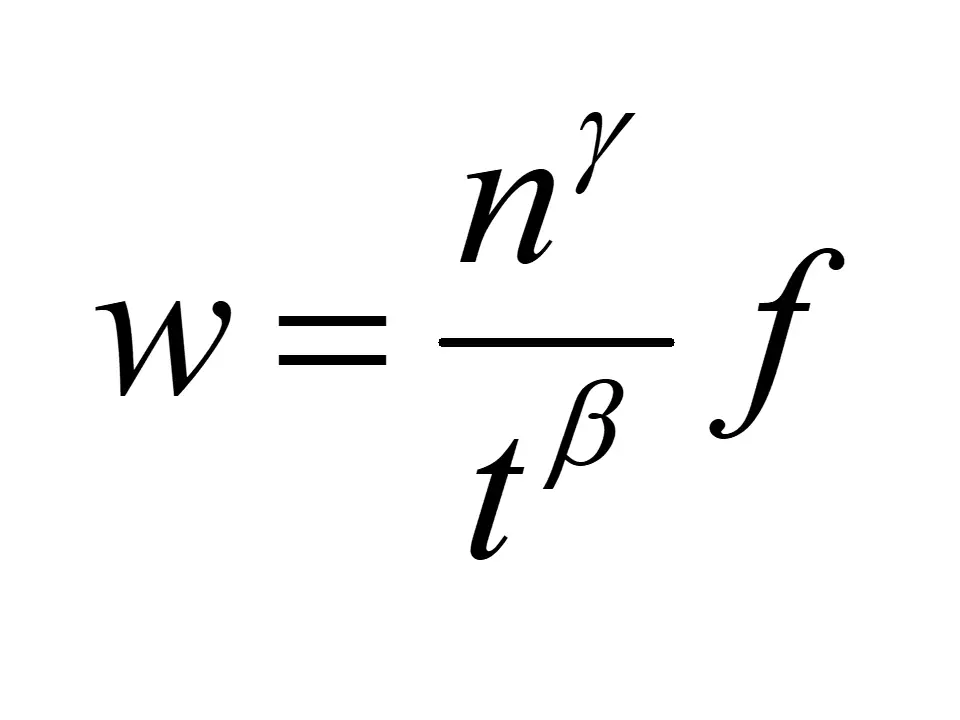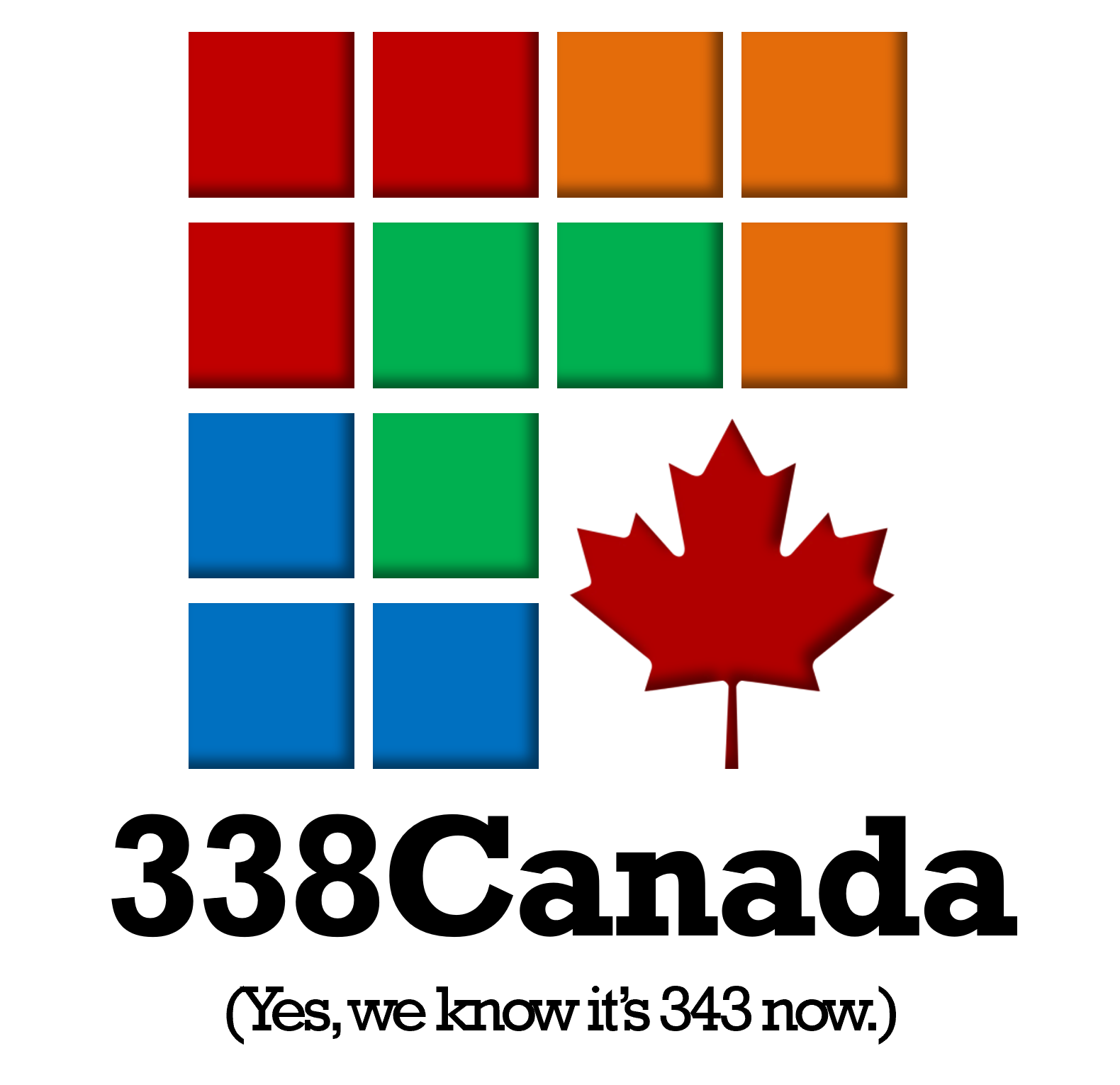About 338Canada
338Canada is an independently owned media website about politics, polling and electoral projections. It was created and is managed by Philippe J. Fournier, who teaches physics and astrophysics at Cégep de Saint-Laurent, a post-secondary institution in Montréal.

Since creating 338Canada and Qc125 in 2017, Fournier has written columns and election analyses for L'actualité magazine, Maclean's, Politico, and is now the Editor-in-chief of the 338Canada and Qc125 newsletters.
He also covers Canadian politics for several news outlets, such as Radio-Canada, CTV Montreal, Noovo (Bell Media's French TV station), several Cogeco stations across Canada, and CPAC.
Find Philippe J. Fournier on social media: Substack, Twitter/X, BlueSky, Reddit.
About 338Canada's Methodology
The 338Canada model uses a mostly proportional swing model with regional adjustments. What is a proportional model? For instance, if a party goes from 30% to 33% in the poll aggregate, an increase of 10% (3 points over 30), then this party's score goes up by 10% in every district (if said party is at 15% in a district X, then its score goes up to 16.5% (an increase of 1.5 point of 15). Also taken into consideration is the electoral history of regions and districts, which helps set giving probabilistic floors and ceilings for each party.
Of course, mostly proportional does not mean exclusively proportional. The 338Canada model also uses demographic data: Careful considerations is given to demographics of each district, such as median and average household income, age distribution, language most spoken at home, etc. This data is used to make statistical correlations of voting intention swings between regions and districts. Why use demographic data? Because in some cases, it can help control some of the swing. For example: In the 2014 Quebec election, Québec Solidaire (QS) received 51% of the vote in the Montreal riding of Gouin, but QS only received 7.5% of the vote provincially. Four years later, during the 2018 election campaign, QS was polling at around 15% — double the support it had won in 2014 — so obviously, QS wasn't going to win 2 × 51% = 102% of the vote in Gouin. In cases like this one, proportional swing needs demographic adjustments. [In the end, QS received 16% of the vote provincially and 59% of the vote in Gouin - meaning the QS vote had already reached its saturation point in the riding.]
What data is used by the model?
- Languages most spoken at home (very useful especially, but not exclusively, in Quebec);
- Age distribution curves;
- Median and mean household income;
- Population density, which helps build an "urbanity index";
- Education levels;
- Riding countries of birth and immigration levels;
- Classes of workers and employment statistics;
First and foremost, polls are weighted according to their sample size and field date. The weight of a poll (w) is proportional to the square root of its sample size (n) and diminishes as time (t) passes by. Also, a polling firm rating (f) is attributed to each poll — this variable is an editorial decision by 338Canada (I know it can/will be a source of criticism, but I stand by it — and it is a variable, not a constant.) For more information of the 338 Ratings of Canadian Pollsters, visit this page.
Here is the basic equation:

The gamma exponent is usually ½ (hence, the square root of the sample size). The time variable t is calculated from the middle field date of a poll. The beta exponent of the time changes whether we are in pre-campaign or campaign mode. Since voting intentions can move rather fast during campaigns, the beta factor increases as we get closer to election day (meaning a poll's weight diminishes at a slower rate outside of campaigns and faster during campaigns).
Finally, the effect of star candidates is also estimated by calculating the approximate 'over-performance' of past candidates in similar situations (party leader, cabinet minister, high media visibility candidates, etc.).
A prime example of this is former deputy Premier of Quebec Nathalie Normandeau (in the Jean Charest governments). She first ran in the Bonaventure district in Gaspésie in 1998, where the PQ had won by 10 pts in 1994 (until 2018, much of Gaspésie still leaned towards the PQ). Normandeau won a narrow 160-vote victory that year, but later became a star in the Quebec Liberal Party and was re-elected in 2003 with over 60% (!) of the vote in Bonaventure. She (and the Quebec Liberals) held on to Bonaventure until she resigned in 2011. In the next general election, the PQ won back Bonaventure. It's safe to say that many Bonaventure voters didn't vote QLP as much as they voted for Normandeau herself.
This is one of many examples of a local star candidate having a significant impact on the vote. We track those down and calculate which candidates overperform their own party in any given election. This is tricky for new candidates, as their local impact is not directly measurable without local polling.

